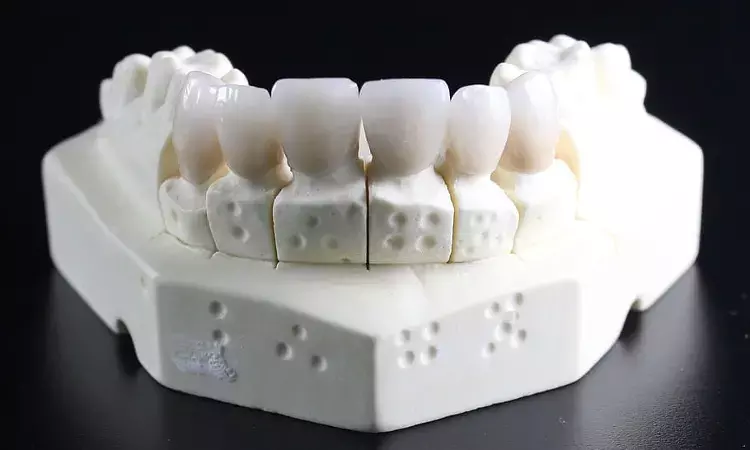- Home
- Medical news & Guidelines
- Anesthesiology
- Cardiology and CTVS
- Critical Care
- Dentistry
- Dermatology
- Diabetes and Endocrinology
- ENT
- Gastroenterology
- Medicine
- Nephrology
- Neurology
- Obstretics-Gynaecology
- Oncology
- Ophthalmology
- Orthopaedics
- Pediatrics-Neonatology
- Psychiatry
- Pulmonology
- Radiology
- Surgery
- Urology
- Laboratory Medicine
- Diet
- Nursing
- Paramedical
- Physiotherapy
- Health news
- Fact Check
- Bone Health Fact Check
- Brain Health Fact Check
- Cancer Related Fact Check
- Child Care Fact Check
- Dental and oral health fact check
- Diabetes and metabolic health fact check
- Diet and Nutrition Fact Check
- Eye and ENT Care Fact Check
- Fitness fact check
- Gut health fact check
- Heart health fact check
- Kidney health fact check
- Medical education fact check
- Men's health fact check
- Respiratory fact check
- Skin and hair care fact check
- Vaccine and Immunization fact check
- Women's health fact check
- AYUSH
- State News
- Andaman and Nicobar Islands
- Andhra Pradesh
- Arunachal Pradesh
- Assam
- Bihar
- Chandigarh
- Chattisgarh
- Dadra and Nagar Haveli
- Daman and Diu
- Delhi
- Goa
- Gujarat
- Haryana
- Himachal Pradesh
- Jammu & Kashmir
- Jharkhand
- Karnataka
- Kerala
- Ladakh
- Lakshadweep
- Madhya Pradesh
- Maharashtra
- Manipur
- Meghalaya
- Mizoram
- Nagaland
- Odisha
- Puducherry
- Punjab
- Rajasthan
- Sikkim
- Tamil Nadu
- Telangana
- Tripura
- Uttar Pradesh
- Uttrakhand
- West Bengal
- Medical Education
- Industry
Intraoral scanning bests conventional impression in improving patient reported outcomes: Study

Intraoral scanning (IOS) reduces working time and improves patient-reported outcome measures (PROMs) compared to conventional impression (CI) techniques, according to a study published in Clinical Oral Investigations.
A group of researchers from the U.S.A conducted a study to evaluate whether intraoral scanning (IOS) is able to reduce working time and improve patient-reported outcome measures (PROMs) compared to conventional impression (CI) techniques, taking into account the size of the scanned area.
The secondary aim was to verify the effectiveness of IOS procedures based on available prosthodontic outcomes.
Electronic and manual literature searches were performed to collect evidence concerning the outcomes of IOS and CI performed during the treatment of partial and completely edentulous patients for tooth- or implant-supported restorations. Qualitative analysis was conducted to evaluate the time efficiency and PROMs produced by the two different techniques. Clinical prosthodontic outcomes were analyzed among the included studies when available.
The results of the study are as follows:
Seventeen studies were selected for qualitative synthesis.
· The 17 included studies provided data from 430 IOS and 370 CI performed in 437 patients.
· A total of 7 different IOS systems and their various updated versions were used for digital impressions.
· The results demonstrated that IOS was overall faster than CI independent of whether quadrant or complete-arch scanning was utilized, regardless of the nature of the restoration (tooth or implant-supported).
· IOS was generally preferred over CI regardless of the size of the scanned area and nature of the restoration (tooth- or implant-supported).
· Similar prosthodontic outcomes were reported for workflows implementing CI and IOS.
Thus, the researchers concluded that Within the limitations of this systematic review, IOS is faster than CI, independent of whether a quadrant or complete arch scan is conducted. IOS can improve the patient experience measured by overall preference and comfort and is able to provide reliable prosthodontic outcomes.
Reference:
Intraoral scanning reduces procedure time and improves patient comfort in fixed prosthodontics and implant dentistry: a systematic review by Siqueira R et. al published in the Clinical Oral Investigations.
https://doi.org/10.1007/s00784-021-04157-3
Dr. Shravani Dali has completed her BDS from Pravara institute of medical sciences, loni. Following which she extensively worked in the healthcare sector for 2+ years. She has been actively involved in writing blogs in field of health and wellness. Currently she is pursuing her Masters of public health-health administration from Tata institute of social sciences. She can be contacted at editorial@medicaldialogues.in.
Dr Kamal Kant Kohli-MBBS, DTCD- a chest specialist with more than 30 years of practice and a flair for writing clinical articles, Dr Kamal Kant Kohli joined Medical Dialogues as a Chief Editor of Medical News. Besides writing articles, as an editor, he proofreads and verifies all the medical content published on Medical Dialogues including those coming from journals, studies,medical conferences,guidelines etc. Email: drkohli@medicaldialogues.in. Contact no. 011-43720751


